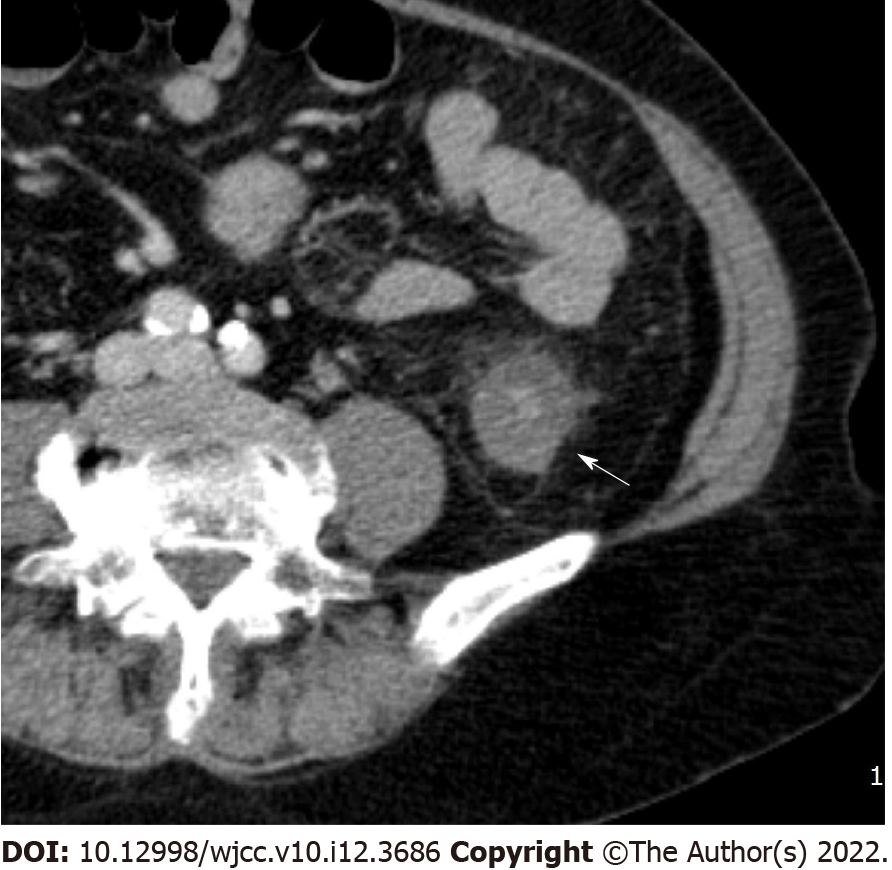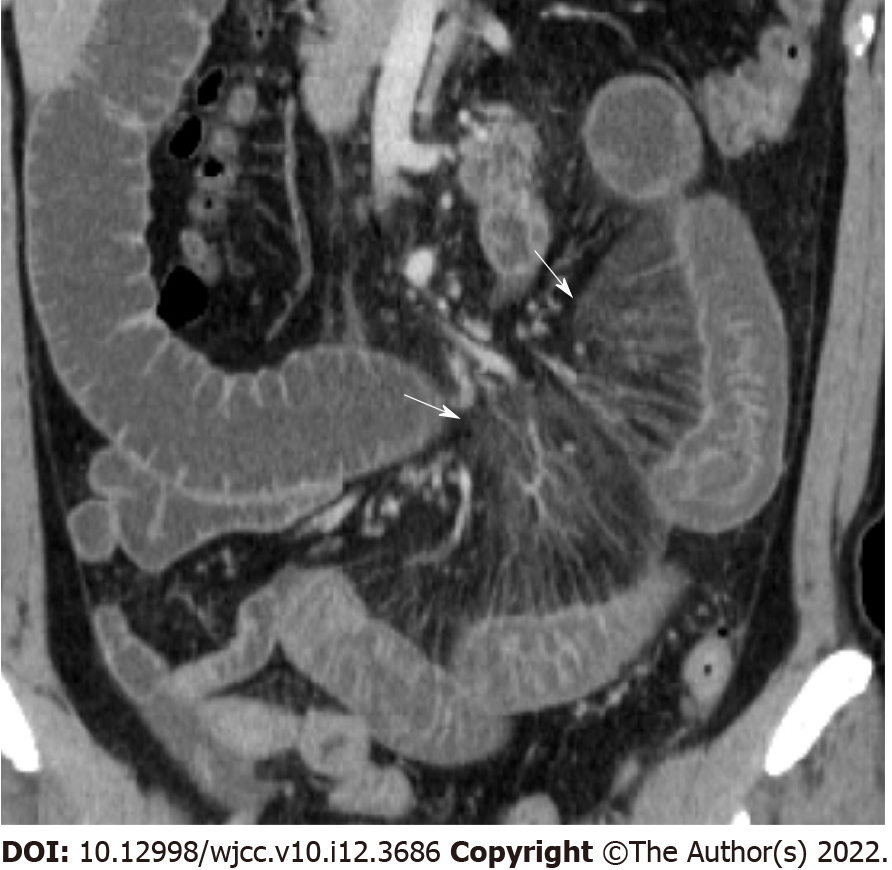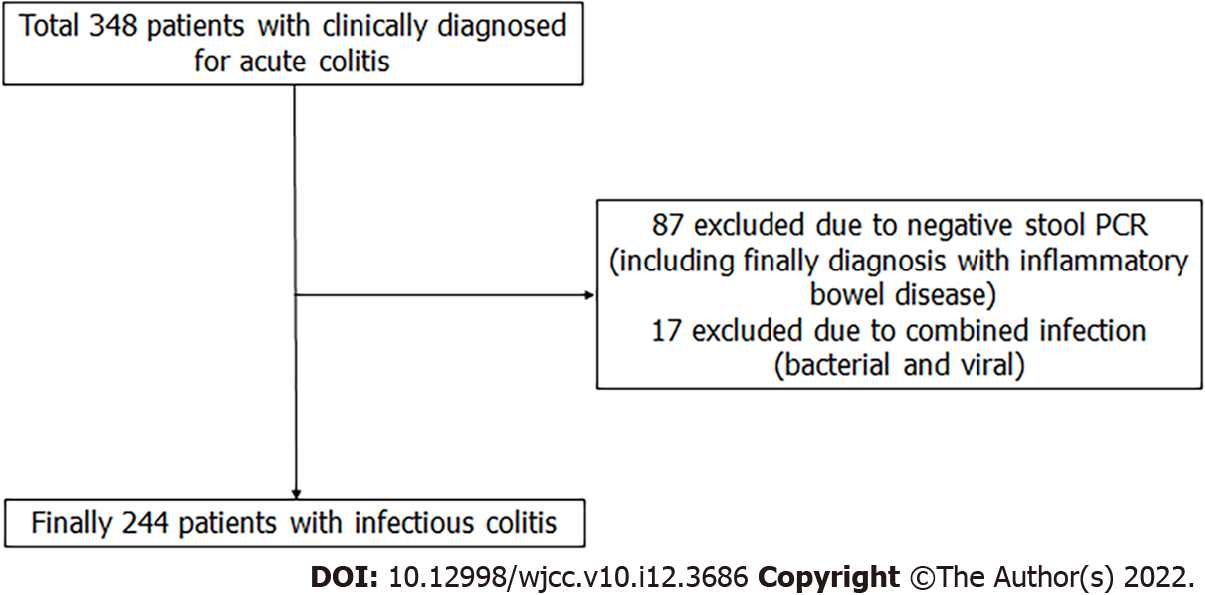Copyright
©The Author(s) 2022.
World J Clin Cases. Apr 26, 2022; 10(12): 3686-3697
Published online Apr 26, 2022. doi: 10.12998/wjcc.v10.i12.3686
Published online Apr 26, 2022. doi: 10.12998/wjcc.v10.i12.3686
Figure 1 Serosal involvement.
Enhanced multidetector computed tomography axial image in portal venous phase shows wall thickening with submucosal edema and pericolic fat stranding (arrow) in descending colon.
Figure 2 Comb sign.
Coronal reconstructed image shows perivascular inflammatory infiltration (arrow) that forms linear densities on the mesenteric side of the affected segments of left small bowel. Fluid distended bowel is also noted.
Figure 3 Accordion sign.
Contrast-enhanced multidetector computed tomography coronal reconstructed image (A) and axial image (B) show hyperemic enhancing mucosa stretched over markedly thickened submucosal folds with irregular mucosal contour with polypoid protrusions.
Figure 4 Enlarged lymph node.
Enhanced multidetector computed tomography axial image in portal venous phase shows enlarged lymph node (arrow, short axis diameter is measured as 12 mm) with strong enhancement adjacent to ascending colon.
Figure 5 Empty colon sign.
Coronal reconstructed image shows complete emptiness (no gas, fluid, or feces) of the transverse colon. Marked wall thickening with mucosal hyperenhancement is also seen.
Figure 6 Flow diagram showing study design and patient selection.
- Citation: Yu SJ, Heo JH, Choi EJ, Kim JH, Lee HS, Kim SY, Lim JH. Role of multidetector computed tomography in patients with acute infectious colitis. World J Clin Cases 2022; 10(12): 3686-3697
- URL: https://www.wjgnet.com/2307-8960/full/v10/i12/3686.htm
- DOI: https://dx.doi.org/10.12998/wjcc.v10.i12.3686














